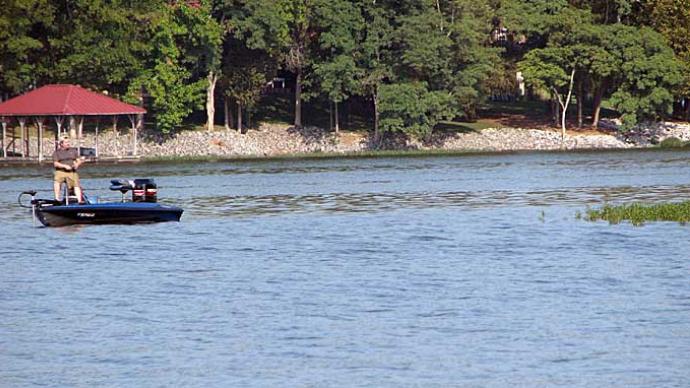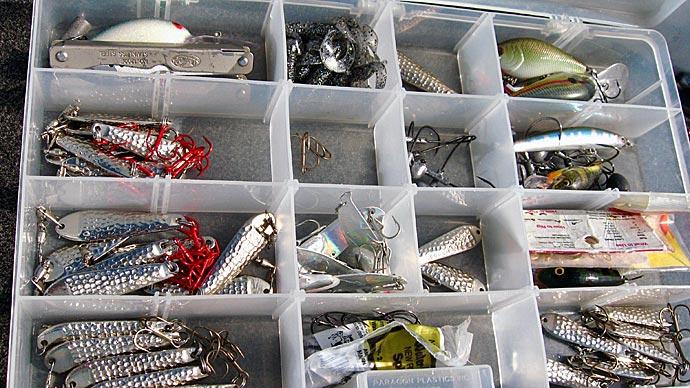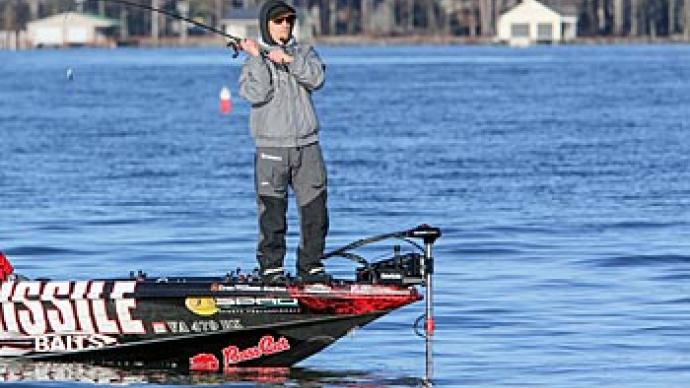
One of the keywords that strike fear into most bass fishermen's souls is suspended fish. This happens many times during the year. In the fall and after the fronts in the winter, it is a crucial time for anglers to find fish suspended. The worst time to have this happen is when the gates at the dam are opened, and water levels begin to fall. On some lakes, when the gates are open, there is a current, and the fish move to the points or creek bends, but on constant-level lakes, this can spell problems for the angler. This is when fish will move out to the deepest water available and suspend.
This is also usually when the fish are in a neutral or non-feeding mood. Following weather changes, bass may know that their prey will become inactive and want to conserve energy, so they move out and suspend. This is not always the case, but it does happen, and it's challenging to get them to take a lure under these conditions. The key to catching these fish is to get down to where they are. The fish will sometimes come up and take the bait, but not always. Most of the time, you have to be right in the strike zone, which means almost on their noses when they are suspended.
There are many lures you can get down to the fish with. I have used spinnerbaits, crankbaits, lipless cranks, jigs, jigging spoons, and Carolina rigs successfully at different times. The drop shot is another presentation that keeps the bait in the strike zone. When using spinnerbaits and jigs, you have to swim the baits at a constant speed through the fish. I have ripped spinnerbaits off the bottom up through suspended fish, like fishing a spoon, and had them strike. Lead tail-spinners are an excellent bait to swim through fish. A vertical jigging spoon over the school's top will also catch much fish.
Many years ago, John Fox, who was on the tournament circuit, passed along a good tip for catching suspended fish with a jigging spoon. If you drop the spoon down to the depth of the fish and hold it very still, the natural line twist will start to unwind, and a small amount of movement will occur. This can sometimes be the best presentation. It has worked for me on Lake Fork with both bass and barfish. I have held the spoon just a half of a reel crank off the bottom, let it sit, and had fish come and hammer the bait.
A good tip when you are vertically jigging bait is to mark your line with a waterproof marker at the tip of your rod where you catch a fish to go back to the exact depth. Too many times, we overwork our lures. A small amount of movement, whether a bottom-moving or topwater bait, will often draw strikes. Crankbaits can be reeled down to suspended fish, but line size will play a significant part in this presentation as the smaller diameter lines will get down further than big sizes.
Look for fish out on points that are no deeper than 20 feet. If the fish are deeper than this, you may have to troll to get the bait down to the fish. A Carolina rig can be lowered to the proper depth, hopped up and allowed to fall, and sometimes draw a strike. You can put small crankbaits, suspending jerkbaits, or any other bait on a Carolina rig and lower it down to where the fish are. A lipless crankbait has been one of my favorite lures for catching suspending fish. You have to cast past where the fish are and count it down, then reel it slowly through the fish. Still, the key is to get the bait right in front of the fish.
You can also find suspended fish over creeks, points, or flooded timber. Don't be afraid to fish for these fish. I have had many good days finding and catching suspended fish. Summer and winter are good times to find suspended bass. Deeper, clear-water lakes generally have quite a few suspended fish. With no cover to speak of, baitfish have to go to deeper water to find a place to hide. The bass will suspend and wait for them to come by.
You will need some good electronics when you start your quest to catch suspended fish. This is a must. A good lake map will also help you find the right places to start looking for them.
Good luck and good fishing.




